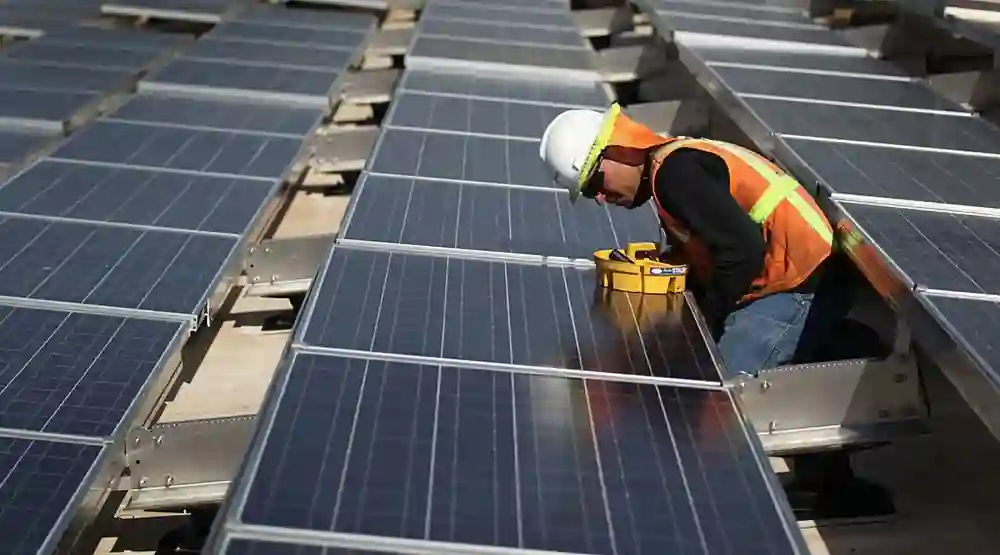
DIY Solar Panel Installation: Pros, Cons, and Essential Tips
Solar energy has become an increasingly popular choice for homeowners looking to reduce their carbon footprint and save money on their electricity bills. Installing solar panels on your property is an excellent way to harness the power of the sun and generate clean, renewable energy. While many people choose to hire professionals for solar panel installation, a growing number are opting for the do-it-yourself (DIY) approach. In this article, we will explore the pros and cons of DIY solar panel installation and provide essential tips for those considering this environmentally friendly and cost-effective endeavor.
Pros of DIY Solar Panel Installation
- Cost Savings One of the most significant advantages of DIY solar panel installation is the potential cost savings. When you install solar panels yourself, you can eliminate the labor costs associated with hiring a professional installation crew. This can result in substantial savings, making solar energy more affordable and accessible for many homeowners.
- Learning Experience Embarking on a DIY solar project is an excellent opportunity to learn about solar energy and gain hands-on experience. You can expand your knowledge of solar technology, electrical systems, and sustainable energy practices. This knowledge can be empowering and may even lead to future DIY projects or career opportunities in the renewable energy industry.
- Control Over the Process Installing your solar panels gives you complete control over the entire process. You can choose the specific components, brands, and designs that best suit your needs and budget. This level of customization allows you to tailor your solar system to match your energy consumption and goals, whether it’s reducing your electricity bill or going entirely off-grid.
- Pride and Satisfaction Completing a DIY solar panel installation is a rewarding accomplishment. You can take pride in your ability to generate clean energy and contribute to a more sustainable future. Additionally, the satisfaction of knowing you did it yourself can be incredibly fulfilling.
Cons of DIY Solar Panel Installation
- Complexity and Technical Knowledge While DIY solar installation can be a rewarding experience, it’s not without its challenges. Solar panel installation requires a good understanding of electrical systems, roofing, and local building codes. If you lack the necessary technical knowledge, you may encounter difficulties during the installation process.
- Safety Concerns Working with electricity and climbing on rooftops can be dangerous if proper safety precautions are not taken. Professional solar installers are trained to navigate these risks safely. DIY enthusiasts must prioritize safety and take the time to educate themselves on best practices and safety measures.
- Time-Consuming Installing solar panels yourself can be a time-consuming endeavor. From planning and design to acquiring permits and physically installing the panels, the process may take several weeks or even months to complete, depending on your skill level and available time.
- Warranty and Insurance Professional solar installers often provide warranties on their work and the components they use. If you install the panels yourself, you may not have access to the same level of warranty coverage, which can be a risk in case of any issues or malfunctions. Additionally, some insurance providers may require professional installation for coverage.
Essential Tips for DIY Solar Panel Installation
If you’re considering a DIY solar panel installation, here are some essential tips to help you succeed:
- Educate Yourself: Take the time to learn about solar technology, electrical systems, and local building codes. Online resources, books, and courses can provide valuable knowledge.
- Assess Your Skills: Be honest about your technical abilities and skills. If you lack experience, consider taking a solar installation course or seeking guidance from an experienced DIYer.
- Plan Thoroughly: Develop a detailed plan for your solar installation, including the layout of the panels, the location of the inverter, and the wiring. Accurate planning will help streamline the installation process.
- Obtain Permits: Ensure you have all the necessary permits and approvals from local authorities before starting your installation. Failure to do so could result in legal issues down the road.
- Use Quality Components: Invest in high-quality solar panels, inverters, and mounting equipment. Reliable components are essential for the long-term performance and efficiency of your system.
- Safety First: Prioritize safety throughout the installation process. Use appropriate safety gear, work with a partner if possible, and follow best practices for electrical safety and rooftop work.
- Consider Professional Help: If you encounter challenges or are unsure about certain aspects of the installation, don’t hesitate to consult with a professional solar installer. They can provide guidance and assistance when needed.
- Monitor and Maintain: Regularly monitor your solar system’s performance and perform routine maintenance to ensure it continues to operate efficiently.
- Understand Financial Incentives: Research and take advantage of any available financial incentives, such as tax credits, rebates, and net metering programs, to maximize your savings and return on investment.
Conclusion
DIY solar panel installation can be a cost-effective and rewarding way to harness the power of the sun while reducing your environmental impact. However, it comes with its share of challenges and risks, particularly for those without prior technical knowledge or experience. If you decide to embark on a DIY solar project, be sure to educate yourself thoroughly, prioritize safety, and seek professional guidance when needed. With careful planning and execution, you can successfully install solar panels on your property and enjoy the benefits of clean, renewable energy for years to come.